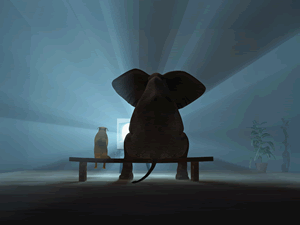 Stories are everywhere. They draw people together and hold an enormous capacity to evoke connection and create change. It is how humans interact and has been our main source of passing on knowledge for more than 27,000 years. We are wired to think in narrative and make decisions based on cause and effect. This is what makes storytelling effective and offers an incredible tool for spreading messages and sowing understanding, especially with young people. When you want to motivate, persuade, or be remembered, start with a story of human struggle and eventual triumph. It captures people’s hearts, by first attracting their brains.
Stories are everywhere. They draw people together and hold an enormous capacity to evoke connection and create change. It is how humans interact and has been our main source of passing on knowledge for more than 27,000 years. We are wired to think in narrative and make decisions based on cause and effect. This is what makes storytelling effective and offers an incredible tool for spreading messages and sowing understanding, especially with young people. When you want to motivate, persuade, or be remembered, start with a story of human struggle and eventual triumph. It captures people’s hearts, by first attracting their brains.
Uri Hasson, a professor and researcher of neuroscience at Princeton University, studied the interaction between two brains during communication. He and his team used MRI scans to watch the inner workings of a couple’s brain as one individual told a personal, unrehearsed anecdote. He saw that during engaged storytelling, their brains lit up in nearly exactly the same places, in affect mirroring each other. As the speaker’s narrative became tenser and evoked more empathy, the listener’s brain lit up more brightly. Stories have an immensely strong biological impact that can be scientifically measured; in effect they take over a listeners brain. But it is only through an engaging spiel that this takes place; start speaking in a foreign language, or presenting information in a dry way, and the lights dim and turn off.
In an average Australian Year 12 classroom of 30 students, seven will be experiencing a significant mental health issue. Of those seven, only two will seek support, leaving five suffering in silence . A major contributor to this statistic is stigma – the negative association held by young people when it comes to mental ill health. This is where the strength of peer-to-peer programs in breaking down the stigma surrounding mental health and encouraging young people to reach for support is crucial. Direct, personal contact with a relatable speaker telling their own story of living with mental ill health has been shown to be the most effective way to create attitudinal and behavioral change in an audience. When it is a young person standing in front of another young person, who looks and speaks like them, stigma is quickly broken down. Here, mental illness is given a face and recovery is given a voice. This in turn empowers young people with the knowledge, understanding and strategies to ensure mental health is promoted and support encouraged.
For a story “is a tiny fuse that detonates tacit understanding in the mind of the listener” and is the ultimate democracy; everyone has one to tell.
Blurb
Batyr aims to engage, educate and empower young people in the area of preventative mental health education. Training young people to share stories with their own lived experience of mental ill health, giving a voice to the elephant in the room and helping structure their journeys of recovery and strength, into stories of hope and recovery. Some of these young people choose to go back into schools and universities where they share their experiences – what it is like dealing with mental ill health, what avenues of support worked for them, and what they now do regularly to maintain their wellbeing. In addition to these stories the Batyr@School program offers practical advice and tips for looking after both yourself and your mates in a fun, safe and engaging way.


